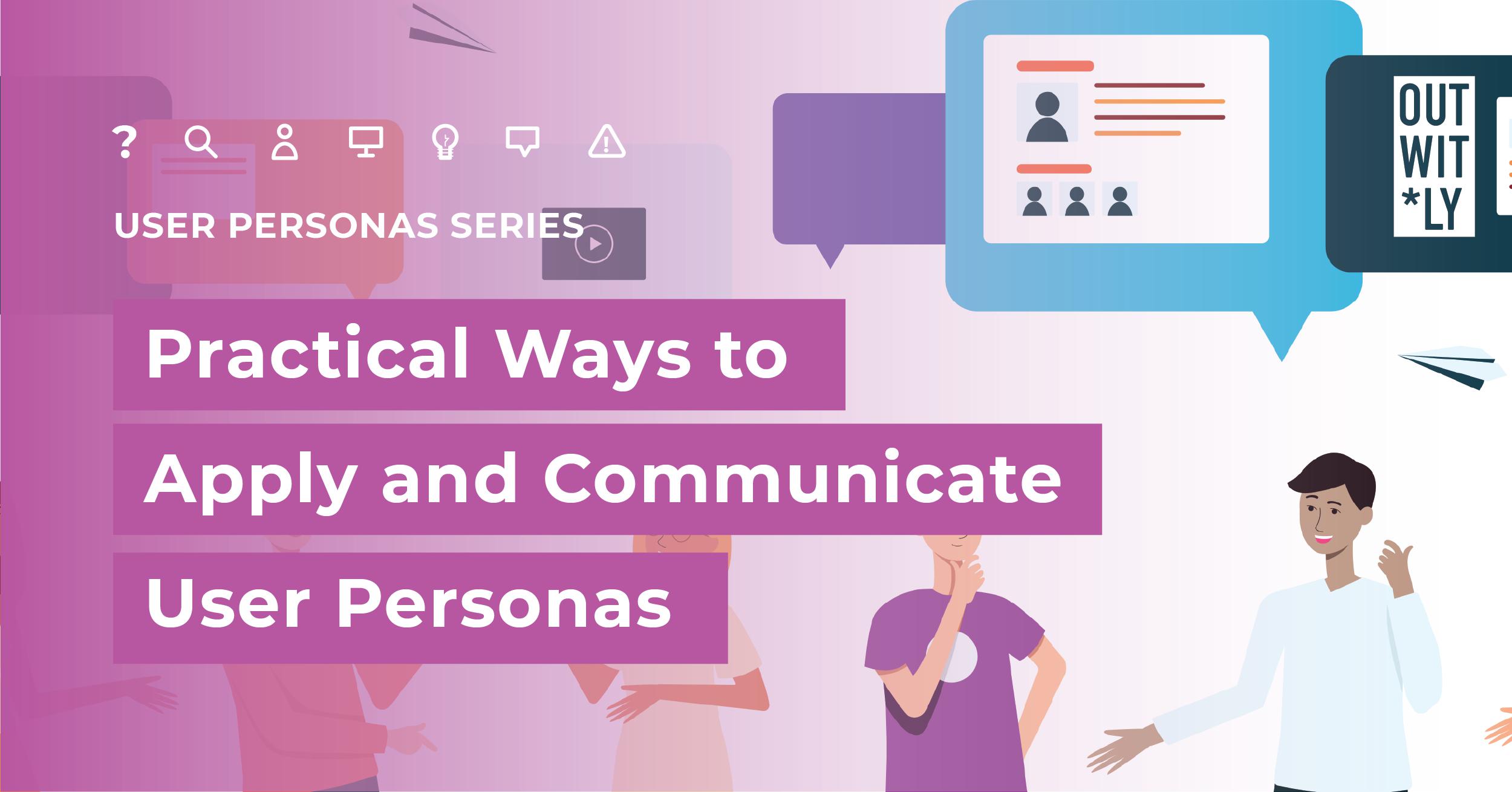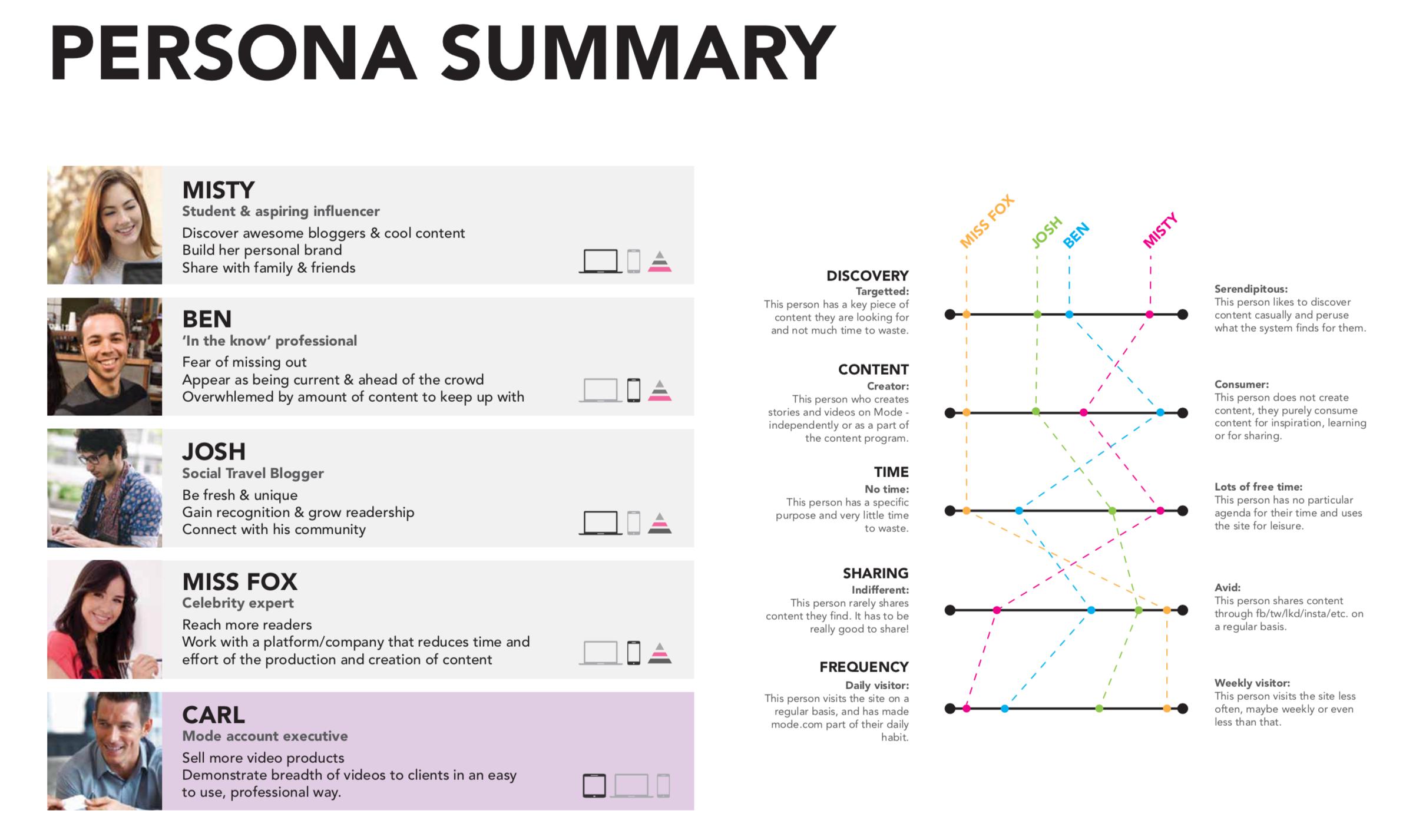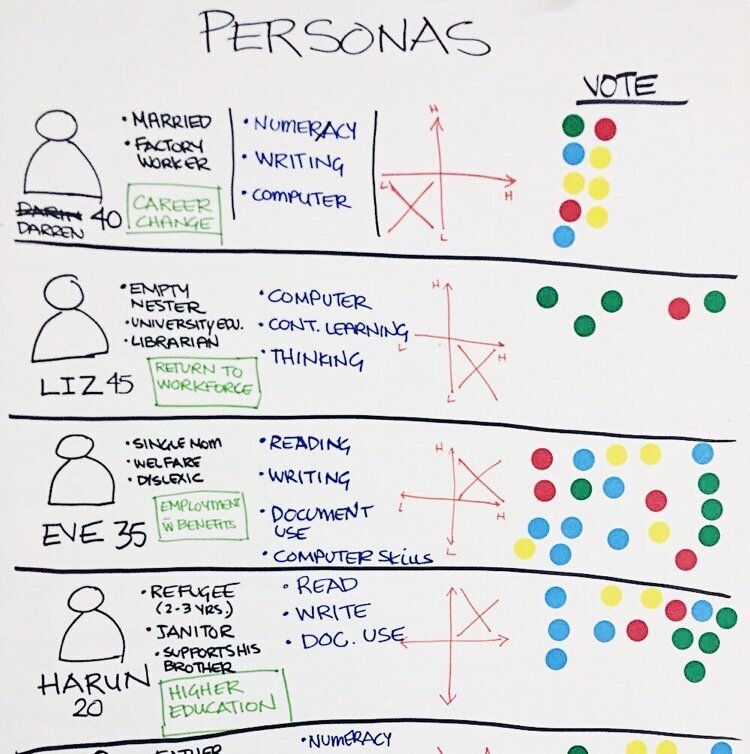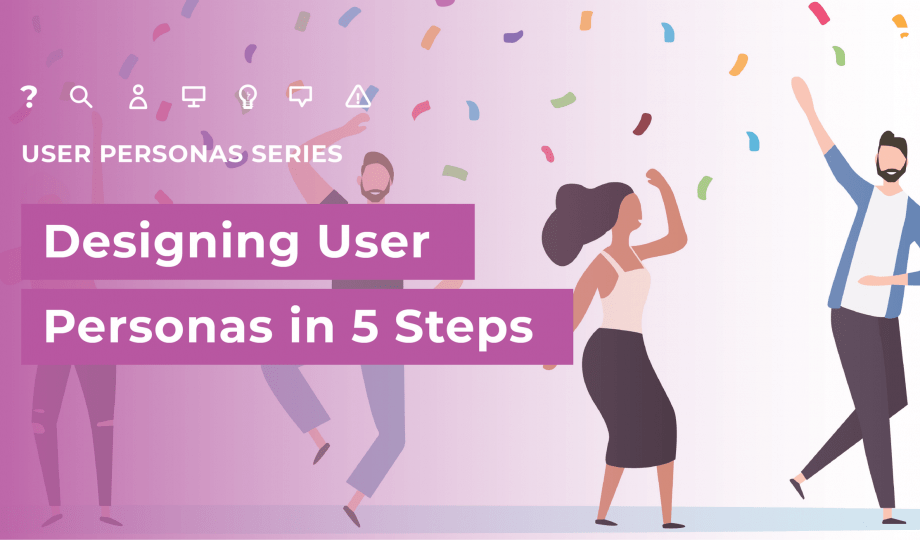In Part 3 of our Personas blog series, we explore tips for communicating your new personas to clients, co-workers, and teams. We also discuss effective ways to apply user personas to your design/research work AND within your own company.
Our User Personas Blog series appears in three parts:
-
Practical Ways to Apply and Communicate Personas (this post)
Communicating your Personas
Personas are the most valuable when you can effectively communicate what they are, how they were created, and how extremely useful they can be.
In Part 2 of our persona blog series, you created a gorgeous, worthwhile set of 4 to 6 representative user personas. Now comes the task of storytelling! As designers and researchers, we’re often responsible for educating clients and colleagues about our tools and processes. Learning to effectively communicate your personas will ensure that 1) your hard work doesn’t go to waste, 2) your personas are actually being used across the organization and your products/services are therefore improving, and 3) there aren’t duplicative efforts in other departments to also create personas (i.e. there is only one set that will evolve as needed).
We’ve collected some extremely useful tricks to communicate the value of user personas:
1. Set the context: Create a short (visually compelling) slide deck to introduce your personas to the team. The slide deck should include the following:
-
What are personas?
-
Why are personas valuable?
-
How can personas be used? (Refer to Part 1 of this series to help with these first 3 questions!)
-
How were the personas developed? What research was conducted, and with how many participants?
-
A matrix/summary slide to compare your personas at a glance. The persona summary slide shows each persona’s name, avatar/photo, and a few key characteristics to differentiate them. This slide also displays which research participants inspired which personas. Check out our examples below for more inspiration!
-
A slide that breaks down how to read a user persona. This slide explains “at a glance” each section of a persona. It will help clients and team members better understand what they are looking at (see our example below.)
-
Each of your personas (1 per slide)
2. Display Them: Print up those babies! You worked hard to create your personas, so put them up in your office, lunch room, or a high-traffic zone in the office. List your email address so colleagues know who to contact if they want to use the personas for one of their own initiatives.
Click through to see a sample persona…
3. Get Personas on the Agenda: Get the word out there! Now that you have a killer slide deck that provides an introduction to your personas, it’s important to start talking about them. Ways to do this include:
-
Get the word out there! Now that you have a killer slide deck that provides an introduction to your personas, it’s important to start talking about them. Ways to do this include:
-
If your personas are for a specific project, ensure there is a dedicated meeting where you can present and review them with stakeholders.
-
Email a PDF of your slide deck to different department heads and let them know how you are using these personas––and how they can, too.
-
Offer to host a lunch-and-learn on the topic.
-
Present them at a town hall (company-wide) meeting.
4. Attract Buy-In by Welcoming Feedback: People are invested in projects they’ve had a hand in creating. Find ways to gather feedback about your personas from stakeholders, users, and colleagues. This will ensure that your personas are accurate––and that people will remember them the next time a project or question arises where they would be useful. You can also:
-
Host a workshop with key stakeholders where you invite them to provide feedback on the personas and then follow-up with the revisions.
-
Print them out and post them up in a common area of the office––provide post-it notes and pens to encourage feedback.
Grab your FREE copy of Outwitly’s Building a Lasting Vision with North Star Principles ebook for more ways to integrate personas into your strategic planning!
Applying Personas to Business
PRIORITIZING PERSONAS FOR INITIATIVES
Use dot-voting to prioritize your personas with key stakeholders in a workshop. Essentially, stakeholders vote for the personas they think your team should be solving for first. In other words, whose experience needs to be addressed most urgently? While personas do represent the current state, with this exercise you can also choose which personas from the current state will still be targeted in the future, or how they might change in the future.
If you have a suite of products or services, you can also identify which personas are the most relevant to each product/service. It’s possible all personas apply to every service and product you offer, but it’s equally possible that only some may apply.
USING PERSONAS
Now that all relevant parties understand your personas and know they exist, how can you actually start using them?
-
Product and Service Design: Personas permit you to design features specific to your users. You can use personas to identify new innovative products or services, or to refine existing ones. During your projects, you will come up against questions like: which feature should you design or implement first? And what should the team work on next? Persona pain points (as well as motivations and tasks) are good indicators for future products, features, and new opportunities. In designing your product or service, tackle the following questions: What does “Persona A” need to accomplish? How can Persona “A” accomplish this through our product or service? What would make Persona “B’s” experience better, with less friction? Brainstorm ideas for each, then create a roadmap of initiatives and design activities.
-
Sales: Personas help you identify your buyers’ underlying motivations. Who do they report to? What are their needs? What are their current pain points with similar services? Answering these important questions allows you to identify gaps in the current offerings and tailor your sale’s pitch.
-
Measuring Effectiveness: Use personas as a barometer to check whether your product or service is on track. Ask yourself, would “Amanda” find this useful? Are you meeting her needs? A funny and worthwhile exercise is having your team role play the service or product, and have them step into the persona’s shoes by acting out their experience. Would the persona feel that their experience is being improved? Does a product meet their specific needs related to what they are trying to accomplish?
-
Mapping the Journey: Once you have identified your personas, you can plot out their journey with your business, and the various ups and downs they face. Creating a journey map for each persona can help you demystify their workflows and identify the biggest areas of friction in their journey. Overall, this will give you ideas for improvement. (We have an entire series about Customer Journey Mapping!)
Resources we like…
-
Great piece about designing for the “right” personas on Medium
-
And, Why Personas Fail from Neilson Norman Group







